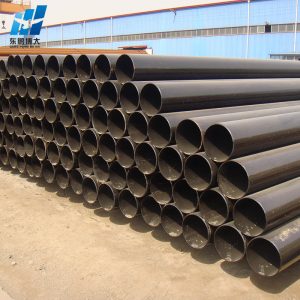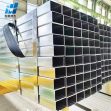What about steel prices
On the supply side, the annual crude steel flat control is no longer the focus of the market, energy consumption is welded steel pipe, crude steel production declines or exceeds expectations. According to data from the National Bureau of Statistics, the average daily crude steel output fell to 2,685,200 tons in August, lower than the average daily crude steel output from August to December to 2,715,300 tons, meaning that if the current production pace is maintained, the annual crude steel flat control target is not a problem. From the steel mill maintenance and production limit action, September – October crude steel production still has room to decline. From the impact of the variety, the independent electric steel plant is limited, the impact on building materials is greater, which is also the reason why the current rebar performance is stronger than the hot coil. In the later stage, the focus of attention is on the sustainability of production limit.

On the demand side, real estate weakness is a probability event. From the link of sales — land acquisition — new start — construction — completion, it is not difficult to see that in addition to the completed area is in a state of recovery, other links are in a downward trend, thus forming a negative cycle: the decline of commercial housing sales leads to the further increase of the financial pressure of steel pipe companies, which constitutes a negative drag on the new construction. Late focus on real estate production and marketing policies at both ends of the marginal loosening. Affected by the hidden debt of local governments, coupled with the lack of quality projects, local governments lack of investment impetus, the growth rate of infrastructure investment is not as expected, the later stage still needs fiscal force, but considering the difficulty of financing infrastructure supporting funds to alleviate the problem, the high rebound of infrastructure investment should not be expected too high.
Based on the two-year average growth rate of pre galvanized steel pipe, if the current growth rate is maintained, the growth rate of broad-based infrastructure investment will be maintained at around 1% in 2021. The growth rate of fixed asset investment in the manufacturing industry continued to decline, but still maintained a positive growth rate of more than 7%, showing a relatively firm performance. The support of low-carbon development (equipment upgrading), support for the manufacturing industry (loans tilted), structural easing for micro, small and medium-sized enterprises (re-lending by the central bank) and other policies for stable manufacturing investment cannot be ignored. However, the contraction of upstream raw material supply leads to uneven profit distribution between the upstream and downstream, and the downstream is not willing to increase leverage. The growth rate of manufacturing fixed asset investment also faces downward pressure in the short term. Overall, the improvement of steel demand of round steel tube for sale remains to be seen, which is expected to be difficult to exceed expectations.
Tel: +86 18202256900 Email: steel@fwssteel.com
Previous: High-quality and green steel pipe industry
Next: The trend of rebar










